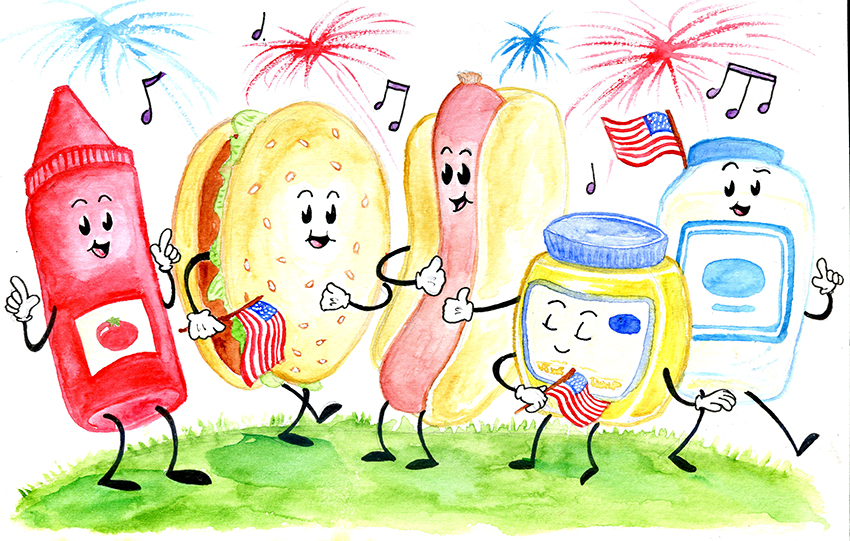Cookouts are a summer staple here in Texas. Is there a way that I can still partake in the food and fun and eat healthfully?
- –Barbie Q.
Cookouts can be a huge source of calories. Salty snacks, alcohol, and fatty cuts of meat are typically not on the menu for those watching their calories.
While many people know how to make smart choices when it comes to snacking and selecting low-cal entrees, they don’t think about the sneaky sauces — there are often large amounts of calories, fat, sugar and sodium hiding in condiments such as mayo and BBQ sauce. You may be surprised to learn what’s really makes up your favorite spread.
Of all the burger spreads and sauces, mustard is one of the safest choices for those watching their waistline. A teaspoon of mustard – the amount in a packet — clocks in at 3 calories and less than a quarter of a gram of fat. Low-sodium-dieters should beware that mustard is rather high in sodium, containing 56 mg per teaspoon (the 2015-2020 Dietary Guidelines recommend consuming less than 2,300 mg per day). This can add up quickly – especially when snacking on other salty BBQ foods such as potato chips and salsa. A final reminder: honey mustard, the yummy dressing loaded with calories and fat, is not the same thing as mustard.
Up next is mustard’s red counterpart: ketchup. According to the 2012 Huffington Post Burger Survey of 1,000 individuals, 66 percent chose ketchup as their favorite condiment. (I think it may be my favorite too!) Compared to mustard, ketchup is slightly higher in calories – 9 per teaspoon – and sodium, but also contains a negligible amount of fat. Maybe the most shocking part of ketchup’s nutrition stats is its sugar. In every tablespoon of ketchup there is a teaspoon of sugar – that’s the equivalent of a sugar cube or sugar packet.
In addition to a tasty hamburger spread, mayo is also one of the main ingredients in many potato and pasta salads, and coleslaws. Despite its popularity in cookout cuisine, this topping is one that should be used sparingly. A tablespoon – think the size of half a ping-pong ball – has 94 calories and 10 grams of fat. For the heavy-handed, or those who love potato salad as much as I do, this can be a calorie catastrophe. Some simple solutions: swap regular mayo for the lighter version, or create salads that are vinaigrette-based rather than creamy.
Grilling just isn’t the same without some kind of BBQ sauce. Whether it’s homemade or bought in the bottle, this is another topping that should be consumed in moderation. A tablespoon of BBQ comes in at almost 30 calories and 175 milligrams of sodium. Fat isn’t an issue with this condiment, but sugar sure is: almost six grams per tablespoon! And it’s easy to fall victim to portion distortion — the dressing ladles you commonly see at restaurants and salad bars can hold anywhere from two to four tablespoons.
Bottom line: Don’t let sauces and spreads throw fire on your summer BBQ enjoyment. A little mindfulness can take your food choices from raw to well-done.















